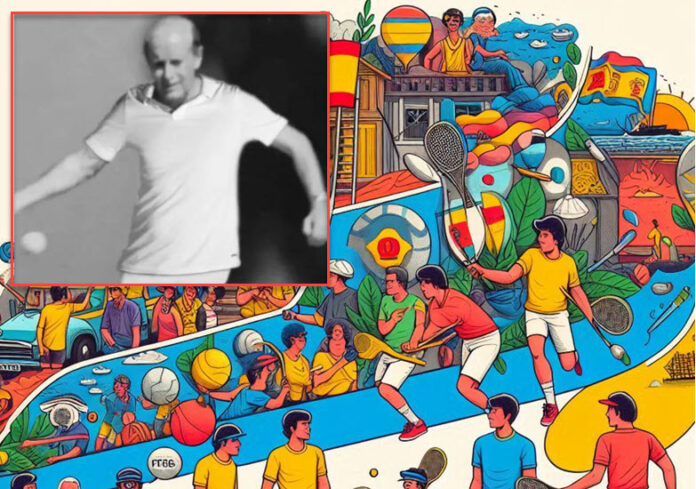Padel, a dynamic and engaging racket sport, has a fascinating origin story that traces back to the late 1960s in Mexico. The sport was invented by Enrique Corcuera, a Mexican businessman with a passion for sports and innovation. Corcuera’s creation was born out of necessity and creativity, as he sought to build a tennis court on his property in Acapulco but faced space constraints.
To overcome this challenge, Corcuera decided to modify his existing squash court. He enclosed the court with walls and incorporated elements of platform tennis, a lesser-known variant of tennis played on a smaller, enclosed court. This unique combination of squash and platform tennis led to the birth of a new sport, which Corcuera initially called “Padel Corcuera.”
The enclosed court, smaller than a traditional tennis court, allowed for a different style of play that emphasized strategy, quick reflexes, and teamwork. The walls became an integral part of the game, as players could use them to bounce the ball, adding a new dimension to the sport. The use of solid, stringless bats instead of traditional tennis rackets also set padel apart from other racket sports.
Latin America Boom
Padel quickly gained popularity in Mexico and spread to neighboring countries in Latin America. Its appeal lay in its accessibility and the fact that it could be played by people of all ages and skill levels. The sport’s social aspect, often played in doubles, made it a favorite pastime for families and friends.
The sport’s growth was further propelled when it reached Spain in the 1970s. Spanish entrepreneurs and sports enthusiasts embraced padel, and it soon became a staple in tennis clubs across the country. Spain’s favorable climate and the sport’s adaptability to both indoor and outdoor settings contributed to its rapid expansion. By the 1990s, padel had firmly established itself as a popular sport in Spain, with dedicated padel clubs and courts springing up nationwide.
From Spain, padel’s popularity spread across Europe and eventually to other continents. Countries like Argentina, Italy, and Sweden became strongholds of the sport, each contributing to its development and global reach. The establishment of international competitions and the formation of the International Padel Federation (FIP) in 1991 further solidified padel’s status as a global sport.
Fastest growing sport
Today, padel is one of the fastest-growing sports worldwide, with millions of players and thousands of courts in over 90 countries. Its unique blend of tennis and squash, combined with its social and inclusive nature, continues to attract new enthusiasts. The sport’s journey from a modified squash court in Acapulco to a global phenomenon is a testament to the power of innovation and the universal appeal of sports.

































